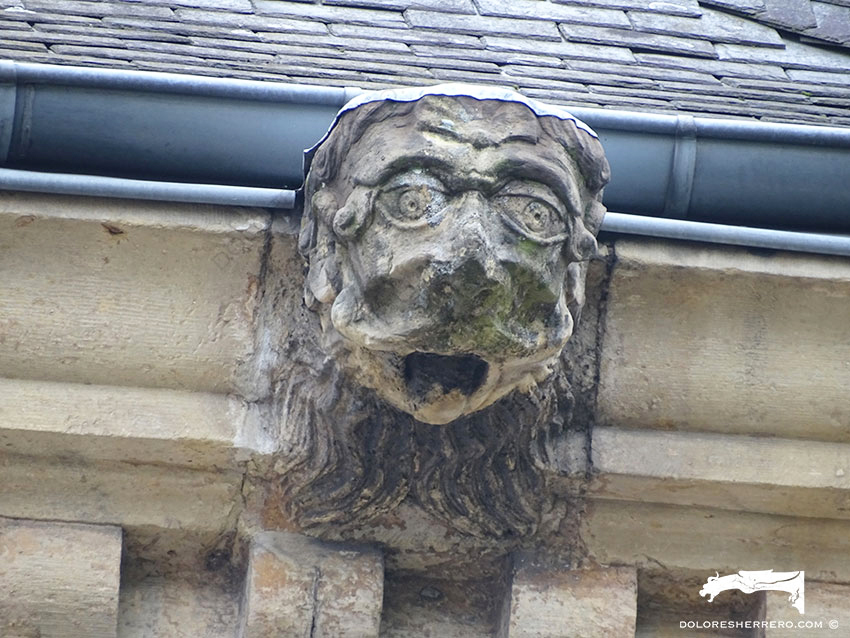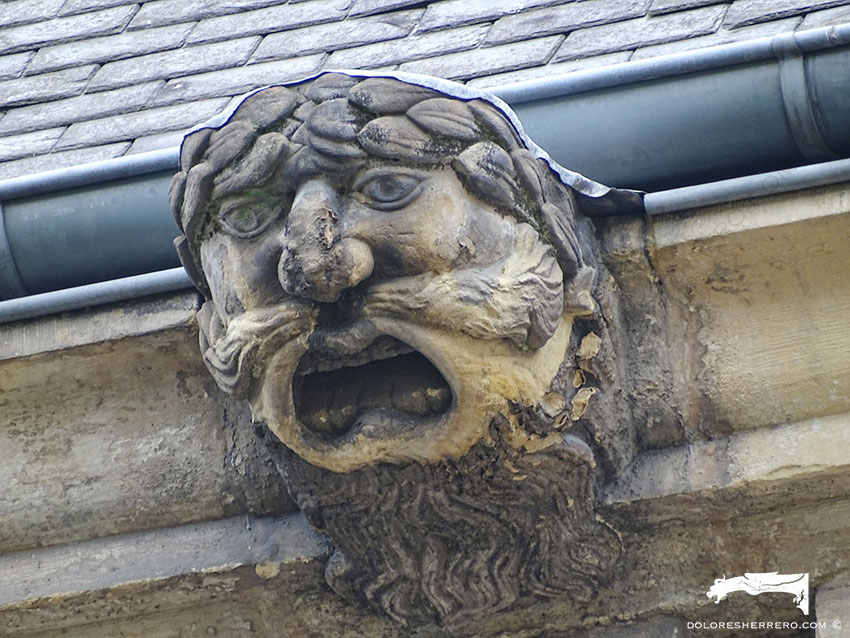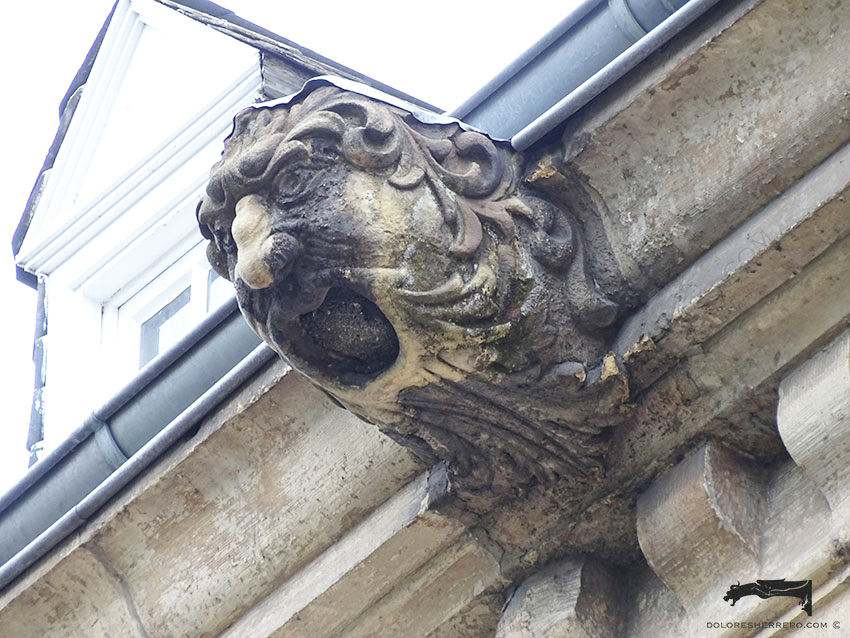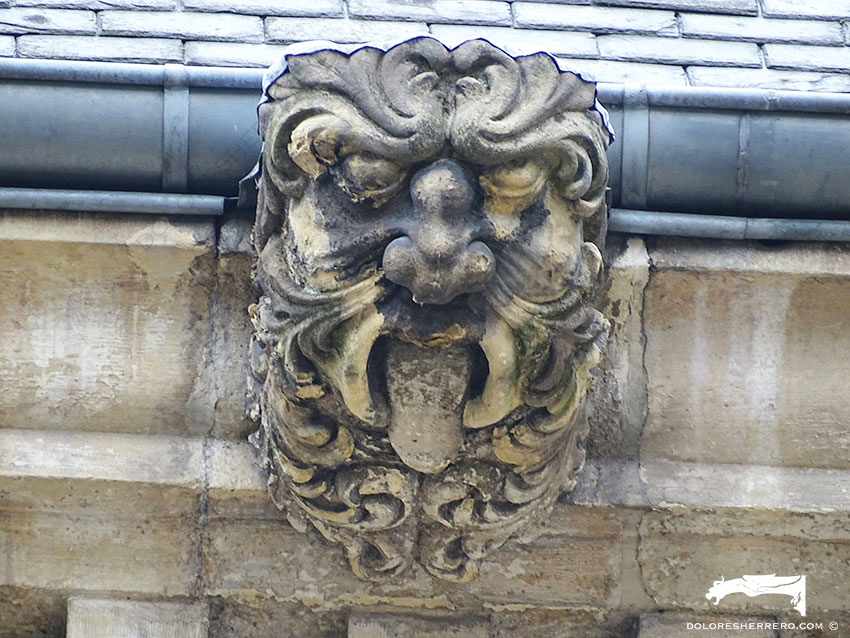Today we’re going to Luxembourg to discover some of its gargoyles, specifically the ones on the National Library.
The Luxembourg National Library was founded in 1899, replacing the Municipal Library dating back to 1798. In addition to holding a huge number of books, periodicals and documents (close to a million), the Library manages legal deposits and copyright matters across Luxembourg.
- Biblioteca Nacional de Luxemburgo
- Biblioteca Nacional de Luxemburgo
The gargoyles on the National Library building are striking and very distinctive. They are human, demonic and Green Man heads.
These types of heads are reminiscent of protective and guardian images on buildings. Let’s remember that Gombrich talks about these apotropaic depictions linked to the need for protection, making it normal for them to take on terrible, demonic forms so as to appear more disturbing and threatening. As we know, for Gombrich gargoyles are a clear example of apotropaic magic.
Art historian Otto Kurz talks about images with a ring in their mouths like a door knocker and sets out his theory on how they spread from Greece into China, via Rome, before later returning to Islamic and Western art. They usually consist of lion‘s heads, as traditional guardians of the homes and possessions of the living and the dead.
Continuing with research on these heads, in the Middle Ages there was a belief about this type of door knocker: if someone who was being chased managed to get to the door knocker of a sanctuary and held onto it, they were supposedly protected by the church and their pursuers would be unable to catch them. Classic authors also described some details of the Celtic worship of human heads and how the Celts erected heads on the pillars and posts of doors or churches, covering them with gold and silver.
Seen from the outside, the library has five gargoyles. The first is a devil with upward curved horns and a generous curly beard.
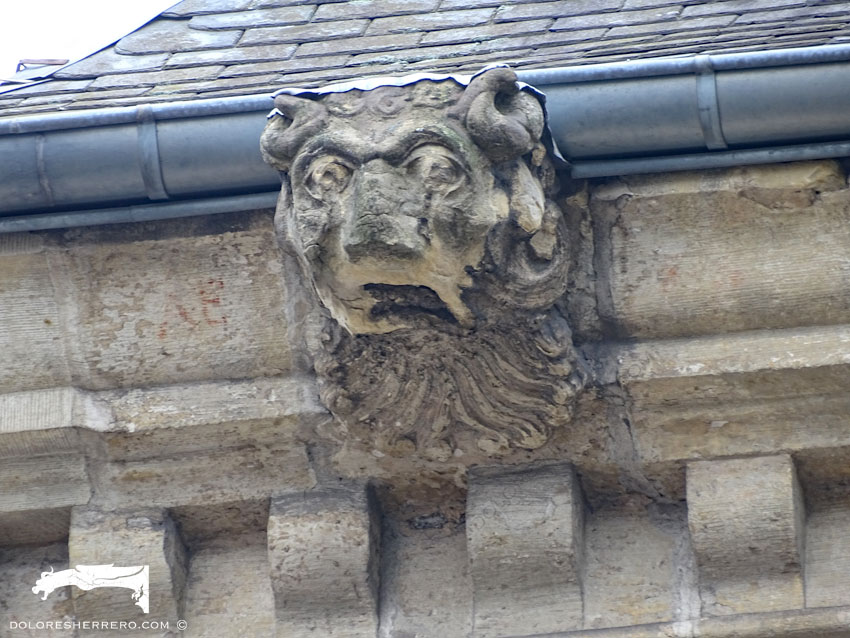
Devil
There are also two human heads, one with curly hair and the other with leafy hair, moustache and a lank beard.
- Human head
- Human head
The two other heads are Green Men, one with his tongue sticking out. The Green Man is a representation of a face surrounded by or made from leaves, which are sometimes shown growing out of his mouth or face. According to Rebold Benton, the Green Man is a symbol of fertility, rebirth and nature, inherited from the pagan imaginary and later adopted by the Christian faith as a symbol of carnal desire and other capital sins. The masks or leafy heads surrounded by vegetation appeared in the Classic period and were connected with the cult of Dionysus, which saw the god as a deity of fertility and vegetation. It later took on a new funerary meaning, becoming a symbol of immortality and resurrection.
You can see that one of the gargoyles is sticking its tongue out. An extraordinary number of grotesque heads are shown with their tongues out. We can only guess at the exact meaning of this gesture. It might be intended simply to heighten the crude and threatening appearance of these heads, which often also have foliage coming out of their mouths.
In addition to their expressiveness, the gargoyles on the library are exceptionally well crafted. The facial features are large (nose, mouth, teeth) and painstakingly carved (eyes with eyelids and pupils, curls, leaves). Some beautiful and surprising gargoyles that we discovered in this lovely, fascinating country.
- Green Man
- Green Man
Bibliography consulted
GOMBRICH, E. H., El sentido del orden. Estudio sobre la psicología de las artes decorativas, vol. IX de las Conferencias Wrightsman, Madrid, Editorial Debate, S. A., 1999.
KENAAN-KEDAR, N. y OVADIAH, A., The Metamorphosis of Marginal Images: From Antiquity to Present Time, Tel Aviv University. The Yolanda and David Katz Faculty of the Arts. Department of Art History, 2001.
LINK, L., El Diablo. Una máscara sin rostro, Madrid, Editorial Síntesis, S. A., 2002.
REBOLD BENTON, J., Holy Terrors. Gargoyles on medieval buildings, New York, Abbeville Press, 1997.
SHERIDAN, R. y ROSS, A., Grotesques and Gargoyles. Paganism in the Medieval Church, London, David & Charles: Newton Abbot, 1975.

Doctor of Art History and researcher specializing in the study of gargoyles.
I am Dolores Herrero Ferrio, and my thesis, “An Approach to the Study of Gargoyles of Gothic Cathedrals in Castilla and León”, is dedicated to the study of these fascinating figures.
If you like gargoyles and art history, you will also enjoy my book, “The Gargoyle and Its Iconography,” a book I have written with great care for those interested in the world of gargoyles.
I have created my own Encyclopedia of Gargoyles, a Gargopedia to share with you, where you will discover all the secrets and wonders of these enigmatic sculptures.
I hope you enjoy this Gargopedia as much as I have enjoyed creating it, and remember that each gargoyle has a story to tell, and here you will discover them all.
 The Gargoyles on the Cathedral of María Inmaculada in Vitoria: Part One
The Gargoyles on the Cathedral of María Inmaculada in Vitoria: Part One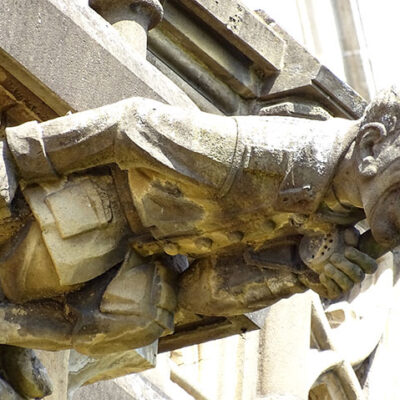 The Gargoyles on the Cathedral of María Inmaculada in Vitoria: Part Two
The Gargoyles on the Cathedral of María Inmaculada in Vitoria: Part Two Gárgolas en Luxemburgo
Gárgolas en Luxemburgo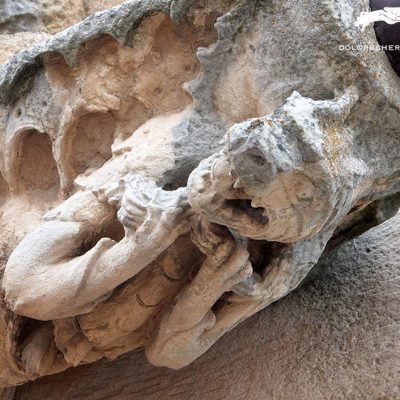 Gargoyles and the Representation of the Devil: Part Three
Gargoyles and the Representation of the Devil: Part Three The Anthropomorph in Gargoyles: Part Two
The Anthropomorph in Gargoyles: Part Two Gárgolas y la representación del demonio: Parte I
Gárgolas y la representación del demonio: Parte I The Gargoyles on the Provincial Palace in Bruges
The Gargoyles on the Provincial Palace in Bruges

